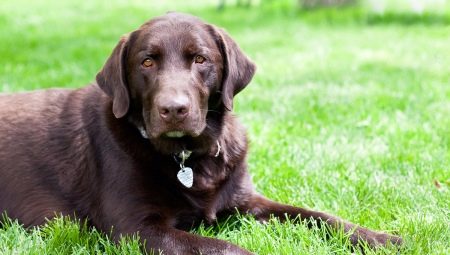The distinctive characteristics of the Labrador breed make its representatives sought-after and desired human pets. Due to their friendliness, cheerfulness and strength, animals are suitable for different official activities, and are suitable for different owners, including children whom dogs love, and quickly become attached to them.
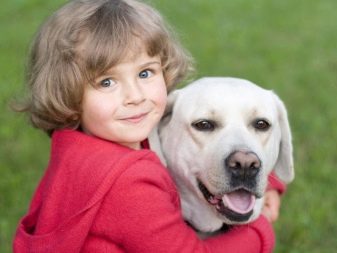
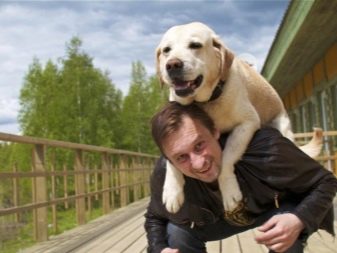
Puppy sizes
The Labrador has excellent working qualities, ease of movement, impeccable, harmonious body type, in addition, the dog is well trained, so the breed is considered universal.
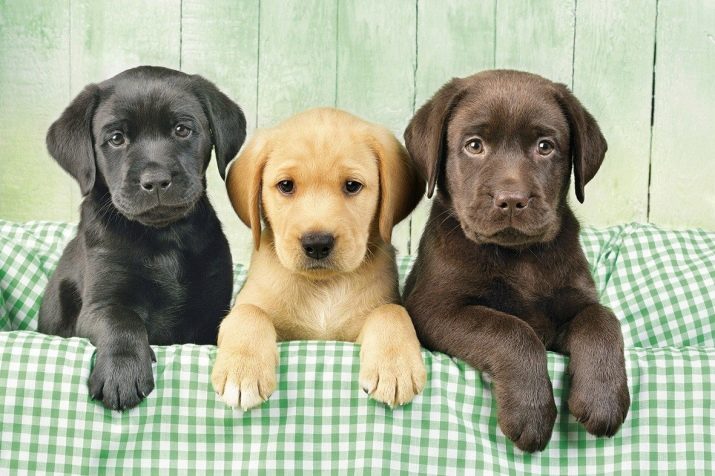
There are official standard parameters developed for puppies of these animals by experts of the RKFnecessary in order to monitor their development and growth.
The table below is an approximation, and yet you should adhere to the specified values established for small labradors from 30 days to 10 months:
Age, month | Puppy weight, kg | Height at withers, cm | Head circumference, cm | Chest circumference, cm | Muzzle length, cm | Muzzle circumference, cm | Metacarpus cm |
1 | 3,5-3,8 | up to 23.5 | no more than 28 | 37–38 | about 4 | 17 | 9 |
2 | 7–8 | 30–32 | 29–32 | 45–56 | 4,5-5 | up to 22 | 10–11 |
3 | 12–14 | 39–42 | 34–36 | 51–56 | around 7 | 23–24 | 11–12 |
4 | 17–19 | 44–46 | 39 | 60–65 | 7–8 | 24–26 | 11,5–12 |
5 | 21–22 | 48–51 | about 42 | 66–68 | 7,5–8,5 | 25–27 | 11,5–12,5 |
6 | 24–26 | 50–55 | 42–43 | 67–70 | 8–9 | 27–28 | up to 12.5 |
7 | 26–28 | 52–56 | 43–44 | 70–74 | 8–9 | 28–29 | 12–13 |
8 | 28–30 | 54–57 | up to 46 | 70–76 | 8–9 | 28–30 | until 13 |
9 | 29–32 | 54–58 | 46–48 | 70–77 | up to 9.5 | 28–31 | until 13 |
10 | 30–36 | 54–58 | 46–55 | 70–84 | no more than 10 | 28–32 | 11,5–14 |
In the future, the animal is considered an adult, however, some pets continue to grow up to a year, and the males are much larger and heavier than bitches.
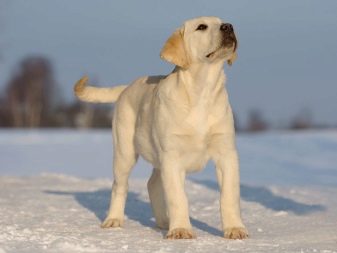
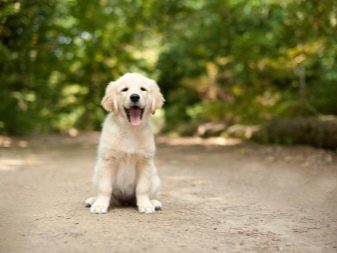
Any deviations from the norm lead to disqualification of the pet, so when choosing a puppy, you need to consider many of these nuances. However, in reality, of course, there are differences in the parameters of each small pet, due to individuality due to heredity.
Measurements are preferably carried out periodically for months, with the help of a specialist or on their own, so as not to miss the important points of growing up the dog and the changes associated with it.
Adult Exterior Requirements
Looking at an adult animal of the Labrador breed, one gets the impression of a strong, and at the same time compact beast, which has a large head, powerful chest and wide, strong limbs.
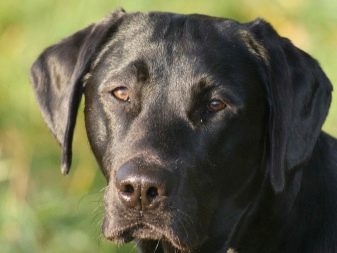

The breed standards are:
- flat back with a wide lower back, deep chest;
- a thick, gradually tapering to the tip of a tail of moderate length;
- straight forelimbs with a long oblique shoulder;
- low hock joints of the hind legs, muscular and well developed;
- a large wide skull with a powerful blunt muzzle, strong jaws and upright teeth;
- ears - hanging, but not heavy, located behind and adjacent to the head;
- powerful, strong neck;
- rounded paws, with developed pads;
- thick, dense coat with waterproof undercoat, without scratching and waves;
- eyes are small, hazel or light hazel, smart and friendly.
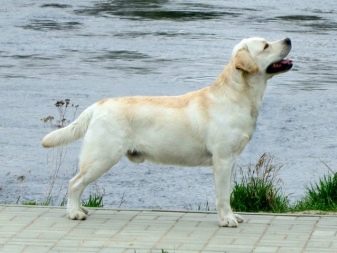
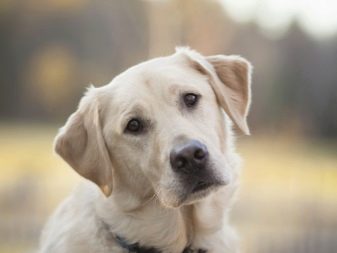
Standard color - black, brown. Yellow color provides many shades: from light cream to bright red, the presence of a light (white) spot on the chest is allowed.
If you plan to take your pet to the exhibition, you should know for what shortcomings the Labrador may disqualify:
- tail bent behind the back;
- “Cow” hind legs;
- fleshy cheeks;
- longitudinal folds of the skin;
- other deviations from the above standards.
The height of the adult cable at the withers is usually about 56–57 cm, the females of the Labrador Retriever are slightly lower, their height is 54–56 cm.
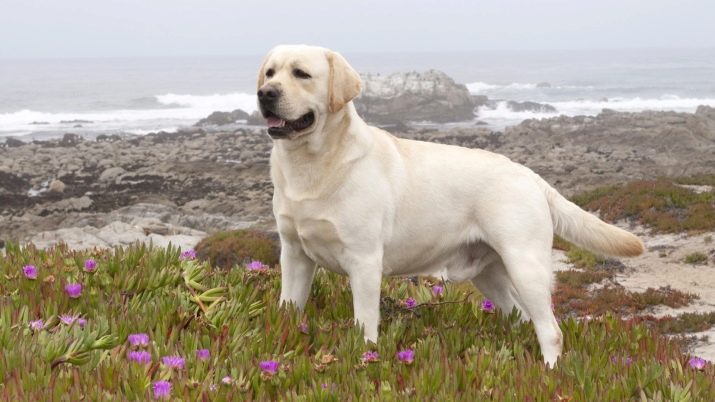
Record Labradors
Unique animals of this breed, distinguished by their unusual size and superpowers, are listed in the Guinness Book of Records. Part of the reason for this is genetics, but in some cases - the result of lengthy training under the guidance of man.
Here are just some examples of such wonderful animals.
- It is known that a Labrador is a hunting dog, able and loving to swim. But two labradors - Kai and Jeepsey exceeded all expectations. The champions managed to cross the bay with a width of 15.6 km, and did so in 6 hours 18 minutes. The owner of the animals was constantly with them, and encouraged his pets.
- The longest time of active work as a guide was worked by a girl named Cindy-Clio from Tel Aviv - 14 years and 8 months.
- The Golden Retriever Trepp managed to detain more than 100 criminals, as well as to find drugs worth $ 63 million during his service in the police.
- Widely known to a pet named Tabby brought his activity to protect the environment from pollution by plastic containers. For six years, the Labrador has collected more than 26,000 bottles.
- The heaviest labrador in the world is registered in Australia. Black male Sampson weighs 85 kg. However, due to the large weight, the animal cannot move, it has shortness of breath and high blood pressure. The reason for this was malnutrition. Now the dog lives in a shelter, and doctors help her lose weight in all accessible and safe ways.
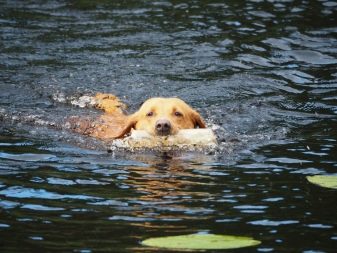

In addition, along with the German Shepherd, Border Collie, poodle, Doberman and Husky, the Labrador is recognized as one of the most intelligent dogs with high intellectual potential.
How to measure dog parameters correctly
If everything is clear when measuring an animal with a weight, then other parameters should be dealt with.
- The growth of the animal, that is, its height, is measured in the highest place of its withers. For those who do not know what a withers is, you should know that this is the part of the body where the incline of the shoulder blades and the lower point of the neck converge.
- When you need to measure the head of a pet, the width of the head in the cheekbones is taken - you need to attach the tape to the center of the forehead, and then stretch it into the zygomatic arches in front of the ears.
- The length of the muzzle is measured from the interorbital cavities to the tip of the nose along the line of the inner corners of the eyes.
- To measure the metacarpus, the tape is passed below the wrist, but above the base of the fifth finger.
- When measuring the chest, the tape should pass near the elbows of the dog behind its shoulder blades.

The height, weight and other parameters of a young dog must be measured regularly. To keep the animal calm, the procedure is carried out before eating, stimulating the animal with a treat. The puppy must not be allowed to stop growing or lose weight. Most often this is due to unbalanced nutrition. However, if you notice that the puppy has not only stunted, but also become inactive, sad, does not want to play and walk, and also if the legs are placed incorrectly, this can signal such an unpleasant disease as rickets.

This disease appears at a young age from a lack of vitamin D, as well as phosphorus and calcium.
Bone mass "does not have time" to grow beyond the muscle mass, as a result, the bones become fragile, the back sags, the legs are bent, and growth stops.
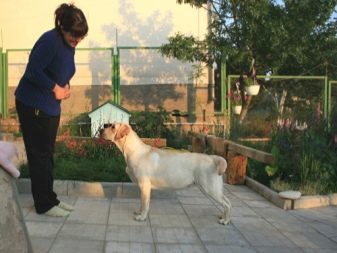
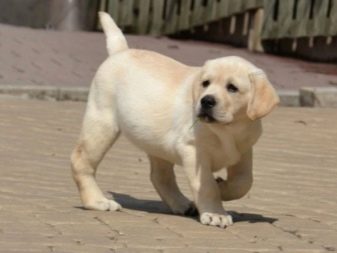
How, then, can help a pet? Consult a veterinarian who will adjust the diet and recommend a calcium-phosphorus supplement. It is also worth more often to take your pet out to the sun. In the autumn-winter period, this is quite problematic, so you can buy an ultraviolet lamp and irradiate the puppy’s tummy once a day, covering his eyes with a dark rag. You need to start with 5 minutes a day, then add a minute daily; maximum warm-up time is 10 minutes.
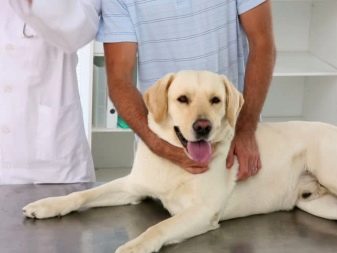
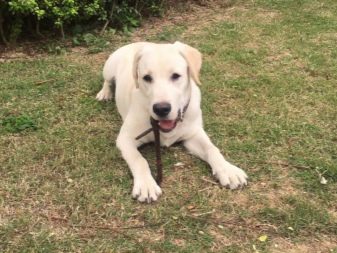
All about the Labrador breed, see the next video.
